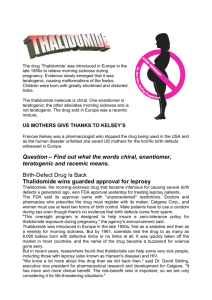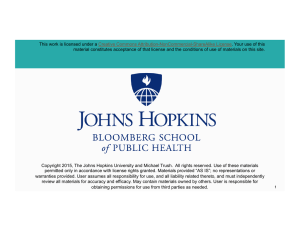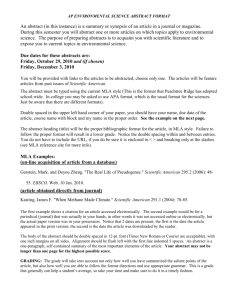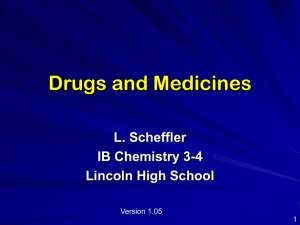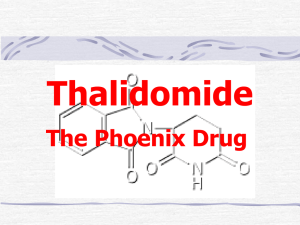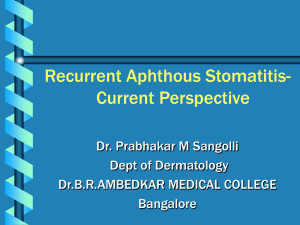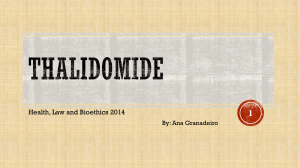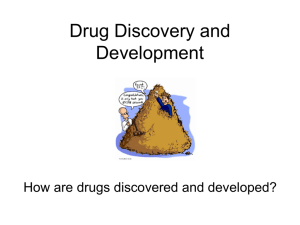Can Expression of VACM-1 Enhance Effects of Thalidomide on Endothelial Cell Growth?
advertisement
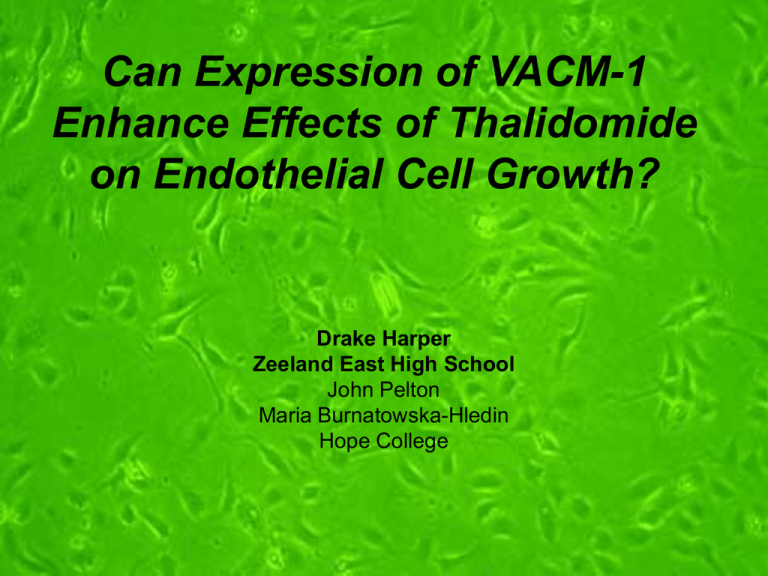
Can Expression of VACM-1 Enhance Effects of Thalidomide on Endothelial Cell Growth? Drake Harper Zeeland East High School John Pelton Maria Burnatowska-Hledin Hope College VACM-1 (Vasopressin-Activated Ca2+-mobilizing receptor) • Isolated and studied by Hledin’s Lab • Inhibits Cell growth by regulating cAMP and MAPK phosphorylation, and p53 concentration, signaling pathways involved in cell growth that lead to cancer • In vivo VACM-1 is expressed in endothelial cells (cells in vasculature) • Mutation in VACM-1 sequence (where one amino acid is changed) creates a dominant negative phenotype (reverse the effect) ie. Cell growth increases Thalidomide • Originally created to help pregnant women with “morning sickness” • Caused Birth Defects (Physical deformities on limbs and organs), Later banned Reason for Study: Inhibits Angiogenesis (the growth of blood vessels) Cellular targets for Thalidomide’s effects are unknown Hypothesis In normal endothelial cells expressing VACM1 protein, thalidomide will decrease cell growth by inducing VACM-1 protein expression. In cells expressing a dominant negative VACM-1 (VACM-S730A), Thalidomide will increase the mutated VACM-1 but will not inhibit growth. Uses on cancer • VACM-1 stops cell growth, therefore, if used on cancer cells, it should stop the growth of cancerous tumors on cells. Methods • Cell Culture • Western Blot • Wound Healing Assay • Immunostaining Western Blot GAPDH Data Control 90 10 μg/ml 80 50 μg/ml 70 60 50 40 30 20 10 Percent Growth in RAMEC -S730 for three treatments of Thalidomide 0 T=12 T=18 T=24 Control 120 Time (hours) 10 μg/ml 50 μg/ml 100 Percent growth Percent Growth Percent Growth of RAMEC CMV Cells with 100 Three Treatments of Thalidomide 80 60 40 20 0 T=12 T=18 Time (hours) T=24 Summary • Thalidomide increases VACM-1 protein concentration which results in decreased growth. • When VACM-1 is mutated, it is unable to inhibit cell growth Conclusion Anticancer effect of Thalidomide may involve induction of VACM-1 Acknowledgements Dr. Hledin John Pelton Dr. Hledin’s lab group REACH Hope College
